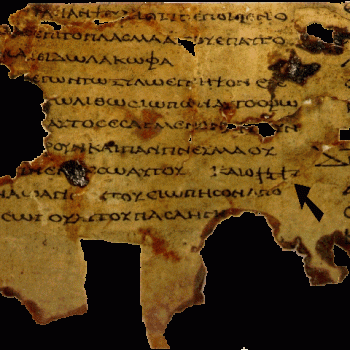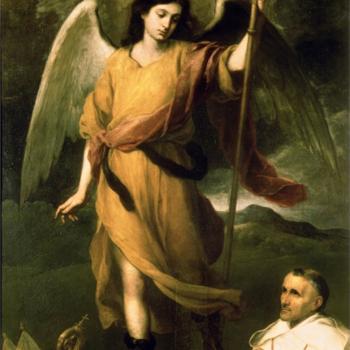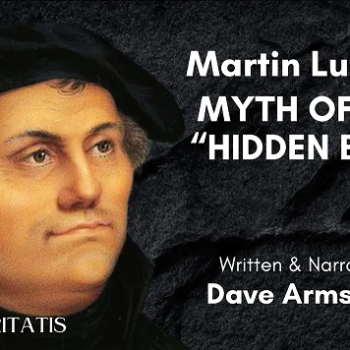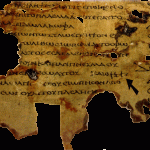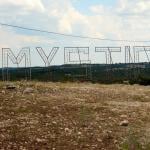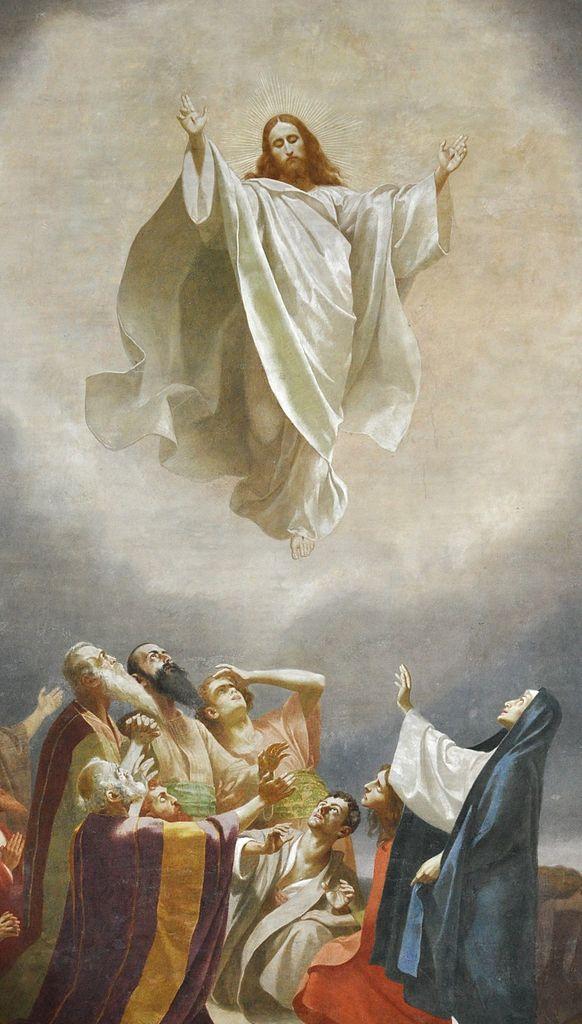
Atheist and anti-theist Bob Seidensticker runs the influential Cross Examined blog. He asked me there, on 8-11-18: “I’ve got 1000+ posts here attacking your worldview. You just going to let that stand? Or could you present a helpful new perspective that I’ve ignored on one or two of those posts?” He also made a general statement on 6-22-17: “In this blog, I’ve responded to many Christian arguments . . . Christians’ arguments are easy to refute.” He added in the combox: “If I’ve misunderstood the Christian position or Christian arguments, point that out. Show me where I’ve mischaracterized them.” I’m always one to oblige people’s wishes if I am able, so I decided to do a series of posts in reply.
It’s also been said, “be careful what you wish for.” If Bob responds to this post, and makes me aware of it, his reply will be added to the end along with my counter-reply. If you don’t see that at the end, rest assured that he either hasn’t replied, or didn’t inform me that he did. But don’t hold your breath. On 8-24-18 Bob wrote (after having virtually begged to dialogue with me back in May) that my alleged “disinterest in the truth reflects poorly” on me. What are we to make of his utter “disinterest” in defending his opinions against serious critique, then? Bob’s words will be in blue. To find these posts, word-search “Seidensticker” on my atheist page or in my sidebar search (near the top).
*****
Bob wrote in his piece, “Contradictions in the Resurrection Account” (4-9-12; rev. 3-22-13):
How many days did Jesus teach after his resurrection? Most Christians know that “He appeared to them over a period of forty days” (Acts 1:3). But the supposed author of that book wrote elsewhere that he ascended into heaven the same day as the resurrection (Luke 24:51).
The post-Resurrection account of Luke 24 (RSV) refers to it being “the first day of the week” (Sunday) after the crucifixion. Then 24:13 says that Jesus’ appearance to the two disciples on the road to Emmaus occurred on “that very day.” The account of this story in Luke appears to unfold in an unbroken narrative, all in one day: ending as follows:
Luke 24:50-53 (RSV) Then he led them out as far as Bethany, and lifting up his hands he blessed them. [51] While he blessed them, he parted from them, and was carried up into heaven. [52] And they returned to Jerusalem with great joy, [53] and were continually in the temple blessing God.
First of all, it’s important to note that even ultra-skeptical Bob assumes that Luke was the author of both books (“wrote elsewhere”: i.e., in the Gospel of Luke). Thus, according to him, Luke (or whoever the joint author was, in the skeptical mindset) blatantly contradicted himself in two different accounts of the same thing.
He would have us believe that Luke couldn’t figure out whether Jesus ascended on the same day as His Resurrection, or 40 days later (thus ludicrously asserted both). The Christian replies that Luke wrote the ending of his Gospel, knowing that the Book of Acts would be “Part II”: in which he would give a fuller account of Jesus’ Ascension.
Two clues in the Gospel account suggest that this is not a single day: if one looks closely enough at it. For one thing, if it were supposedly on the same day, Jesus’ Ascension would have been during the nighttime, since 24:29 has the disciples saying, “it is toward evening and the day is now far spent.” This would blatantly contradict Luke’s further details in Acts:
Acts 1:9 And when he had said this, as they were looking on, he was lifted up, and a cloud took him out of their sight.
The second clue is 24:53: “and were continually in the temple blessing God.” If we interpret the entire passage as occurring in unbroken chronology, then this would be right after their return to Jerusalem. But it doesn’t sound like the description of one day. It only makes sense interpreted as a description of their worship practices over a period of time (“continually”).
I would never say, for example, “I returned from my visit to the lake with great joy and was continually in the gym playing basketball.” That clearly doesn’t read as just one night of basketball in the gym, but rather, as many times, over many days. We observe a parallel verse in Acts that makes this interpretation all the more plain:
Acts 2:46-47 And day by day, attending the temple together and breaking bread in their homes, they partook of food with glad and generous hearts, [47] praising God and having favor with all the people. . . . [“continually” = “day by day” / “blessing God” = “praising God”]
I submit that these factors already give strong indication that the account in Luke wasn’t ever intended to imply a one-day occurrence for all the events recorded (i.e., it was always intended to harmonize with Acts 1). But there is also a literary factor that I think decisively refutes the skeptical “contradictory” interpretation.
Luke uses a literary technique that I will further discuss below, called “compression” (or, sometimes, “telescoping”). Catholic apologist Steven O’Keefe explains, and provides an example:
Luke takes a couple related events which have a large gap between them.
Wanting to save space, Luke omits everything between those two events. . . .
Taken at face value, Luke says Paul escaped Damascus and went directly to Jerusalem:
“Their plot became known to Saul. They were watching the gates day and night in order to kill him, but his disciples took him by night and let him down through an opening in the wall, lowering him in a basket. || And when he had come to Jerusalem, he attempted to join the disciples. And they were all afraid of him, for they did not believe that he was a disciple.” – Acts 9:24-26
However, in Paul’s letter to the Galatians he recounts those same events. There we learn that after Paul escaped Damascus he actually wandered in Arabia for a while. Then he returned to Damascus for three years before finally traveling to Jerusalem. It reads:
“But when he who had set me apart before I was born, and who called me by his grace, was pleased to reveal his Son to me, in order that I might preach him among the Gentiles, I did not immediately consult with anyone | nor did I go up to Jerusalem to those who were apostles before me, but I went away into Arabia, and returned again to Damascus. Then after three years | I went up to Jerusalem to visit Cephas and remained with him fifteen days.” – Galatians 1:15-18
Again, if you just read the text of Acts 9:25-26, you’d never know there was at least 3 years between those two verses.
Lucian of Samosata (c. 125 AD – after 180 AD) the Syrian rhetorician, in his treatise, How to Write History, stated:
Rapidity is always useful, especially if there is a lot of material. It is secured not so much by words and phrases as by the treatment of the subject. That is, you should pass quickly over the trivial and unnecessary, and develop the significant points at adequate length. Much must be omitted. [secondary source: Glenn Miller]
In his book, The Historical Reliability of the Gospels (IVP: 2nd edition, 2007, p. 216), Craig Blomberg took note of this and applied it to the Bible:
Perhaps the most perplexing differences between parallels occur when one Gospel writer has condensed the account of an event that took place in two or more stages into one concise paragraph that seems to describe the action taking place all at once. Yet this type of literary abridgment was quite common among ancient writers (cf. Lucian, How to Write History 56), so once again it is unfair to judge them by modern standards of precision that no-one in antiquity required. The two most noteworthy examples of this process among the Gospel parallels emerge in the stories of Jesus raising Jairus’s daughter and cursing the fig tree.
F. Gerald Downing, in his volume, Doing Things with Words in the First Christian Century (Sheffield: 2000, pp. 121-122) observed that the Jewish historian Josephus (37-c. 100 AD) used the same technique:
Josephus is in fact noticeably concerned to ‘improve’ the flow of his narrative, either by removing all sorts of items that might seem to interrupt it, or else by reordering them. . . . Lucian, in the next century, would seem to indicate much the same attitude to avoidable interruptions, digressions, in a historical narrative, however vivid and interesting in themselves.
Protestant apologist Glenn Miller, in his superb and characteristically thorough article, “Contradictions in the Infancy stories?,” states: “this condensation, omission, and telescoping is pervasive in all of biblical literature. . . . this kind of literary style/device is everywhere in the NT narratives.” He then provides many examples (search the above quote to get to them, and see further examples in a separate article by former atheist Steve Diseb).
Michael R. Licona, Baptist New Testament scholar and professor of theology, specializes in the literary analysis of the Gospels as Greco-Roman biographies. I shall now cite his article (part of a larger debate), “Licona Responds to Ehrman on New Testament Reliability”:
Compression was a compositional device employed on a regular basis by historians in Jesus’s day. I provide several examples of compression and other compositional devices in my book scheduled for publication this fall, Why Are There Differences in the Gospels? (Oxford University Press, 2016).
[Dave: In Licona’s book — mentioned above — on pages 71-72, he noted that Plutarch also utilized compression in his book, Antony and that his work, Pompey omits details on the same events that are included in his Antony and Caesar]
. . . a very large majority of the differences in the Gospels are best explained in view of the compositional devices employed in the writing of ancient historical/biographical literature; those prescribed in the extant compositional textbooks written by Theon, Hermogenes, Quintilian, Aphthonius, and others, and those we can infer from observing patterns in how the same author using the same sources reports the same story writing around the same time but does so with differences. . . .
Bart points out that the resurrection narratives in Matthew and John have Jesus appearing to them over a period of days if not weeks, while Luke’s narrative has Jesus rise from the dead, appear to all of the others, then ascend to heaven, all on the same day. Bart also observes that Luke contradicts himself at his ascension scene in Acts 1:3 by saying Jesus was with his disciples for 40 days after his resurrection and prior to his ascension. But this is also quite easily explained in view of the standard compositional devices of that day. Luke has obviously compressed his resurrection narrative. For in Acts 1:3 he knows Jesus had [stayed] with them for a longer period.
Why did he do so? Perhaps he was running out of space to write on his scroll. Luke’s Gospel is the longest of the four. Perhaps he compressed his account to move the story along more rapidly for effect. Perhaps it was to place an emphasis on Jerusalem where the church leadership resided and from where the church would spread. One can only guess. We may not be able to know why Luke compressed his narrative. But it is quite obvious he has compressed it.
Since compression was a common compositional device and is easily identified, are we really to regard Luke as an unreliable source and doubt the historicity of an event because he compressed his description of an event? Bart chooses to do so. But I am under no obligation to follow him on the matter. And those who do are required to take the same approach with virtually all ancient historical literature, at least if they are interested in being consistent. And in so doing, they deprive the term “historically reliable” of any practical meaning. [some paragraph breaks added]
Scot McKnight did a review of sorts of Licona’s book, on his blog at Patheos (which also hosts my own blog). He observed:
Plutarch’s Lives are written as rough contemporaries of the Gospels and they are both “lives” (biographies, bioi) and hence seeing how one operates (Plutarch) may provide categories for understanding how the Evangelists were operating. The only assumption here would be that the conventions for biographical writing would be similar. Licona is accurate in this assumption/conclusion.
I want to make it very clear what I am arguing and am not contending. My friend, Dr. Lydia McGrew, who has done intensive study on these sorts of textual disputes, and has written the book, Hidden in Plain View: Undesigned Coincidences in the Gospels and Acts (2017), made the following helpful comments on my Facebook page, that I completely agree with (edited a bit to make them more coherent for my present purposes):
One should oppose alteration of the facts in such a way that the narrative invisibly appears to be saying something that would, in fact, be false, but that the authors were permitted “by literary conventions” to do on a pretty broad scale. The Evangelists did not invent out of whole cloth the non-overlapping portions of their narratives.
The word “compression” is ambiguous and is one that gets used in two very different ways. Luke wrote quickly and briefly, but he did not deliberately “make” all the events take place on Easter.
The question is whether the author is to be understood as deliberately placing the action into a shorter period or merely writing in a way that could be taken to mean that the action took a shorter time period than it did. This is an absolutely crucial distinction. The former means that the author deliberately attempted to create an appearance contrary to fact: a “fictionalizing literary device.” Even Lucian doesn’t advocate doing that.
Luke [in Luke 24] didn’t “put” all of the events on Easter Day. In other words, it is not the case that Luke knew that they took longer but nevertheless attempted to make it look like they all occurred on Easter Day. There is no reason to think that “in the story” as Luke writes it, the events all occurred on Easter Day.
We have no evidence that it was “allowed at the time” or that the Gospel authors would have “considered themselves allowed” to compress in the fictionalizing sense as opposed to the shortened narration sense.
One can give an abridged / CliffsNotes version of a story and a longer one, without inventing anything or fudging facts. That’s what I believe Luke did. One could compare, for example, the many short and long versions of my conversion story to Catholicism. An atheist could “find” a host of “contradictions” in those.
I think this “literary” understanding and explanation quite sufficiently refute the charge of “contradiction.” Its not so much that Bob Seidensticker has done no study of the texts. He goes out and grabs however many standard atheist charges of alleged “biblical contradictions” suit his purpose. Many of these have circulated for centuries, and have long been refuted by Christians. The problem is that he has not studied deeply enough. He appears to have no awareness that Christians have explained the current problem in the manner seen above. I did a search of his voluminous site for “compression” and “telescoping” (in the literary sense). They turned up nothing whatsoever. Bob is blithely unaware of both.
The latter shortcoming is extremely common in atheist “exegesis” (so-called), and in my opinion it is because of the extreme bias. The atheist has no interest in truly understanding biblical texts or in resolving the problems of seemingly clashing texts. It’s too much fun to throw them in Christians’ faces. They usually approach the Bible, as I’ve said for years, like a butcher approaches a hog.
Unless and until the Bible is understood as a sophisticated text, that can be analyzed just like any ancient text (and given the same respect, apart from any religious adherence), atheists will continue to make lousy arguments (largely from mere prima facie appearance), and will end up looking foolish and unprepared and over their heads, as Bob does yet again.
So far it is fourteen critiques of his arguments and absolutely no response from him (despite his confident challenge recorded in my Intro.). Does anyone know if Bob is still alive? If he has departed this mortal coil that might explain his non-answer. But I have a hunch that he is still kicking, up in the hills — like an atheist Elijah — in a secret cave. I’m here waitin’: should he decide to ever venture back into serious, open, and civil discourse with a Christian apologist opponent.
***
Photo credit: Ascension of Christ (c. 1894), by Gebhard Fugel (1863-1939) [public domain / Wikimedia Commons]
***




